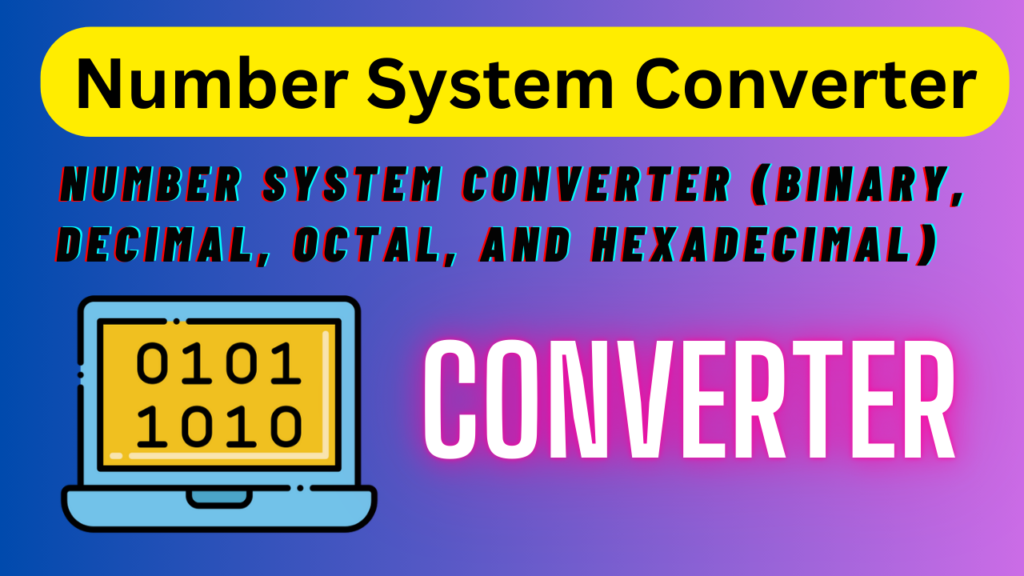Understanding the efficiency of algorithms is crucial for developers and computer scientists. Big O Notation is a standardized way to express the performance and scalability of algorithms, and tools like a Big O Notation Calculator make this analysis easier than ever. This article dives deep into what a Big O Calculator does, its significance, and how it helps in evaluating the time and space complexity of algorithms.
Table of Contents
What is a Big O Notation Calculator?
A Big O Notation Calculator is a tool designed to simplify the process of analyzing algorithm performance by calculating its time and space complexity. With this tool, you can determine how an algorithm behaves as the size of the input grows. Whether you’re solving computational problems or optimizing code, the Time Complexity Calculator and Algorithm Complexity Calculator provide a clear representation of algorithm efficiency.
Key Features of a Big O Calculator:
- Analyze time complexity (O(1), O(n), O(n²), O(log n), etc.)
- Visualize results using a Big O Chart
- Evaluate space complexity with a Space Complexity Calculator
- Provide step-by-step explanations for complexity classes
- Act as a Complexity Analysis Tool to identify bottlenecks in algorithms
- Support programming languages like Python, Java, and C++
Why Use a Big O Notation Calculator?
The Big O Complexity Calculator is invaluable for developers, educators, and students. By using this tool, you can:
- Optimize Algorithms: Quickly identify inefficiencies and improve performance.
- Compare Algorithms: Evaluate different approaches to find the most efficient solution.
- Understand Time and Space Complexity: Gain insights into asymptotic notation for both runtime and memory usage.
- Enhance Learning: Use the Big O Explained feature to understand concepts better with examples and charts.
Big O Notation Examples and Cheat Sheet
Below is a quick reference table for common time complexities:
| Complexity | Notation | Example | Description |
|---|---|---|---|
| Constant Time | O(1) | Accessing an array element | Performance doesn’t depend on input size. |
| Linear Time | O(n) | Looping through a list | Scales proportionally with input size. |
| Quadratic Time | O(n²) | Nested loops | Growth is proportional to the square of input size. |
| Logarithmic Time | O(log n) | Binary search | Reduces input size exponentially per iteration. |
| Exponential Time | O(2ⁿ) | Recursive Fibonacci sequence | Growth doubles with each additional input. |
| Factorial Time | O(n!) | Permutations | Infeasible for large input sizes due to rapid growth. |
How to Calculate Big O Using the Big O Calculator
Here’s how the Big O Analysis Tool simplifies the calculation process:
- Input the Algorithm Details: Describe the operation (e.g., sorting, searching).
- Select the Complexity Type: Choose from common time complexities (e.g., O(n), O(n log n)).
- View the Results: The tool displays the Big O Notation, a step-by-step explanation, and a Big O Chart for visualization.
- Optimize Your Code: Use the insights to refine your algorithm’s efficiency.
Benefits of Using the Big O Complexity Calculator
The Algorithm Performance Analyzer offers several benefits:
1. Time Complexity Solver
It helps determine how your code behaves with increasing input sizes and ensures optimal performance in worst-case scenarios.
2. Space Complexity Calculator
Analyze memory usage and ensure your algorithms run efficiently in constrained environments.
3. Programming Language Support
Whether you're using Python, Java, or C++, the Big O Calculator Online can evaluate runtime for any language.
4. Big O Chart for Better Visualization
Visual graphs make it easier to understand the growth of an algorithm’s runtime or memory usage.
Big O Notation Cheat Sheet
If you’re studying algorithm complexity, refer to this cheat sheet for a quick overview:
| Notation | Name | Application |
|---|---|---|
| O(1) | Constant Time | Array access |
| O(n) | Linear Time | Single loops |
| O(n²) | Quadratic Time | Nested loops |
| O(log n) | Logarithmic Time | Divide-and-conquer algorithms |
| O(n log n) | Linearithmic Time | Efficient sorting algorithms |
| O(2ⁿ) | Exponential Time | Recursive backtracking |
| O(n!) | Factorial Time | Permutations |
How to Use a Big O Calculator Online
The Big O Online Tool is intuitive and straightforward to use. Simply enter the algorithm description, choose the complexity type, and view the results. For developers working on Python Big O Calculator, Java Big O Calculator, or C++ Big O Calculator, this tool provides cross-language support.
Big O in Algorithms: Practical Examples
Sorting Algorithms
- Bubble Sort: O(n²)
- Merge Sort: O(n log n)
- Quick Sort: O(n log n)
Searching Algorithms
- Linear Search: O(n)
- Binary Search: O(log n)
FAQs
What is Big O Notation?
Big O Notation is a mathematical representation of algorithm efficiency, describing how runtime or memory usage grows with input size.
How to Solve Big O Notation?
Use tools like the Big O Notation Calculator to analyze loops, recursion, and other operations in your algorithm.
Why is Big O Important?
It helps developers understand the scalability of their code, enabling them to write efficient programs.
Conclusion
The Big O Notation Calculator is a must-have for anyone serious about optimizing code and understanding algorithm efficiency. With features like the Time Complexity Solver, Algorithm Runtime Calculator, and interactive Big O Chart, this tool is perfect for students, professionals, and educators.
Experience the power of the Big O Analysis Tool today to streamline your algorithm complexity calculations and make better programming decisions.
Try the Big O Notation Calculator Now! Optimize your algorithms and solve Big O Problems like a pro.


